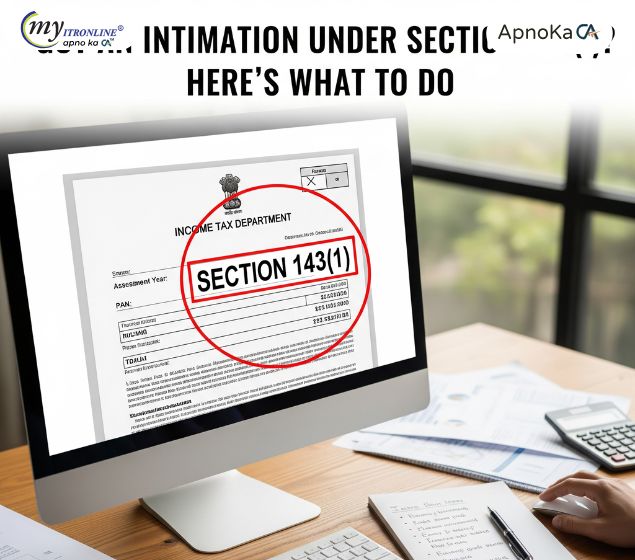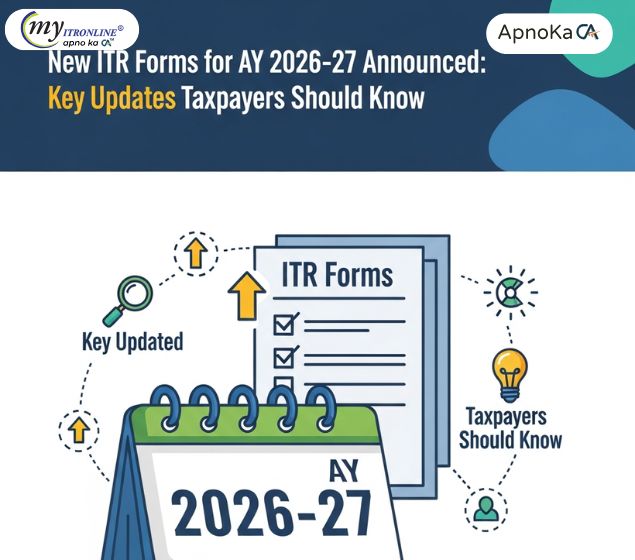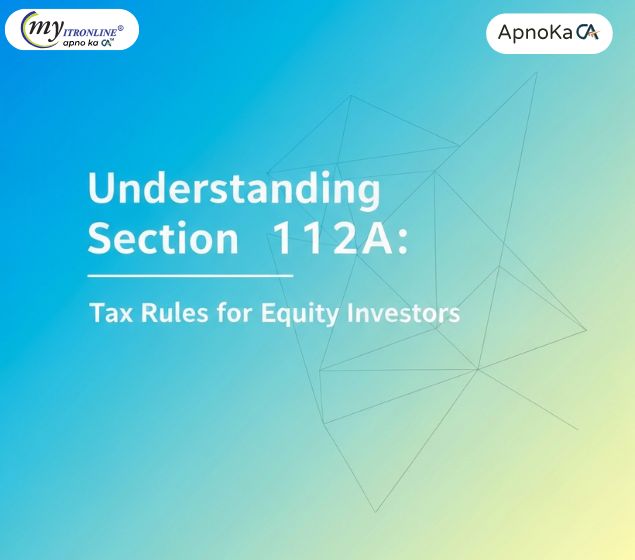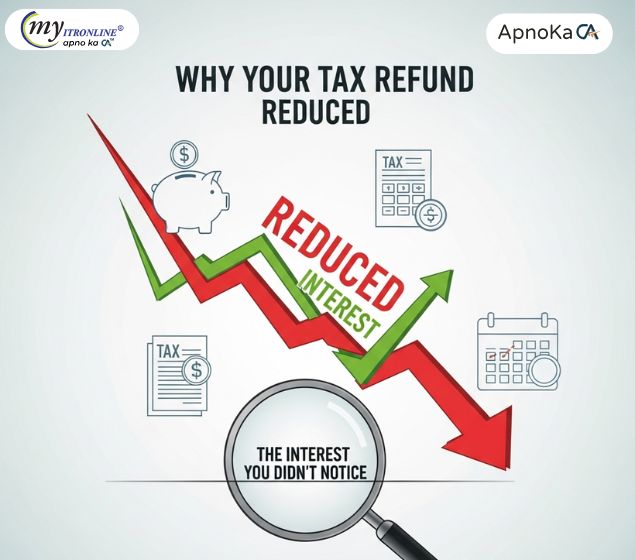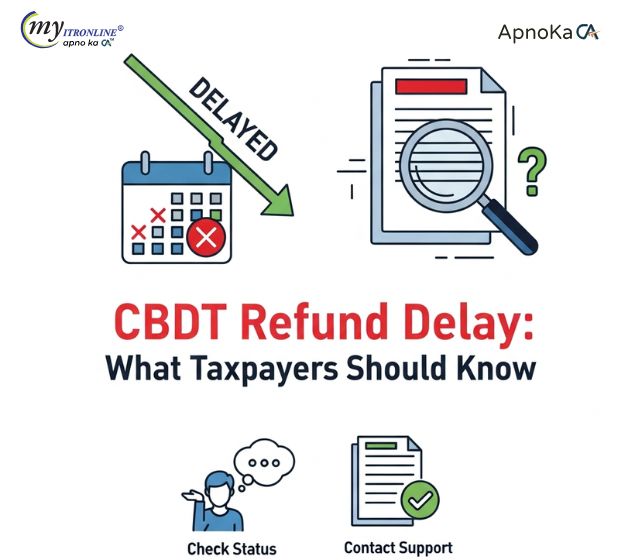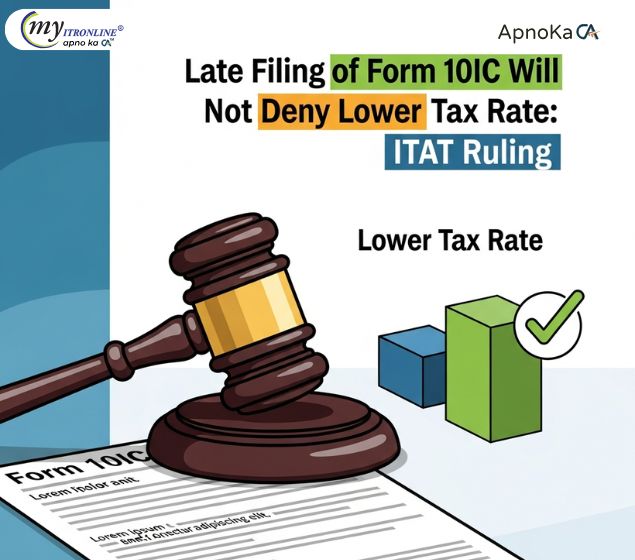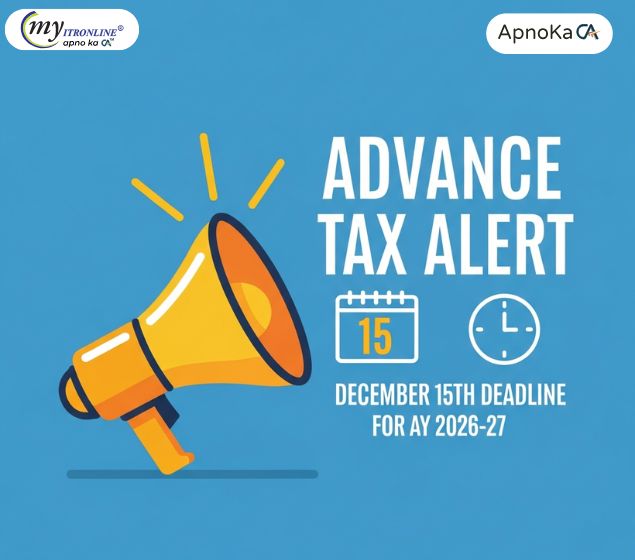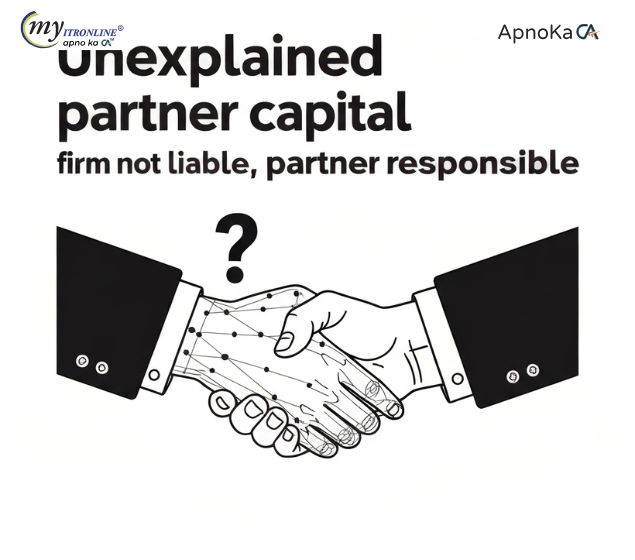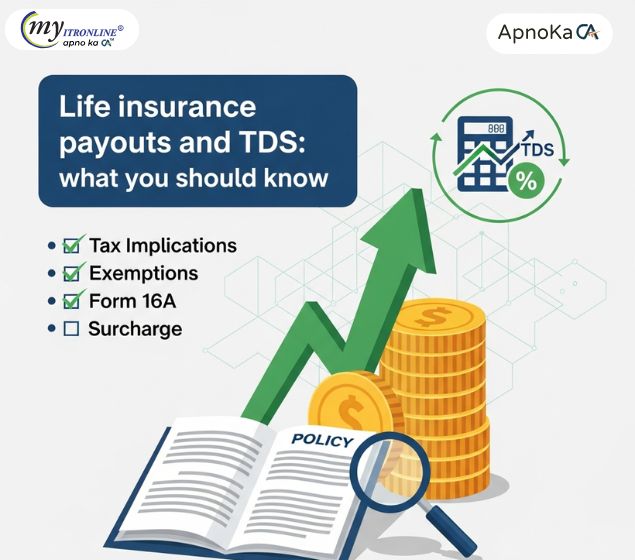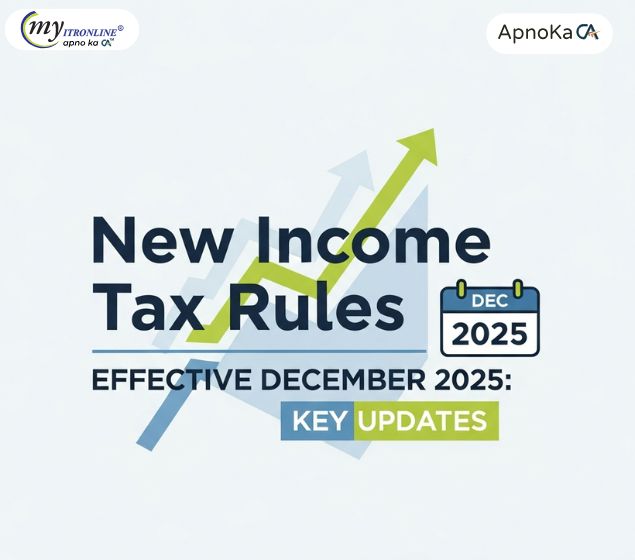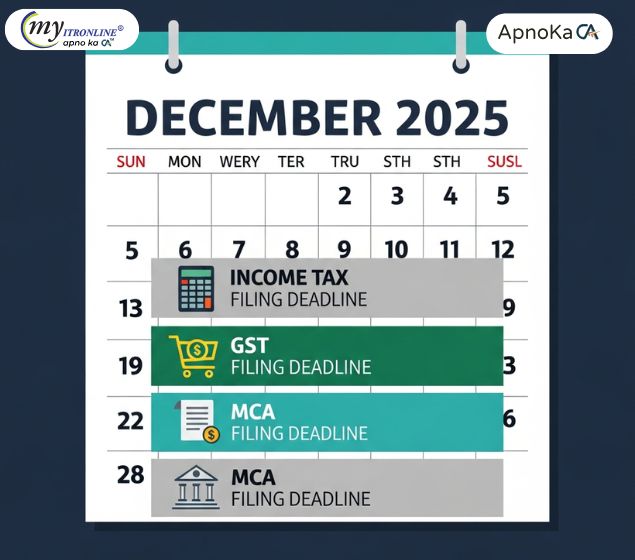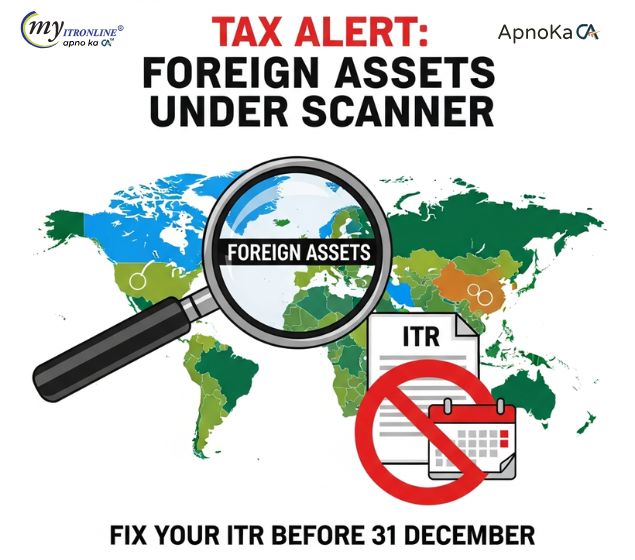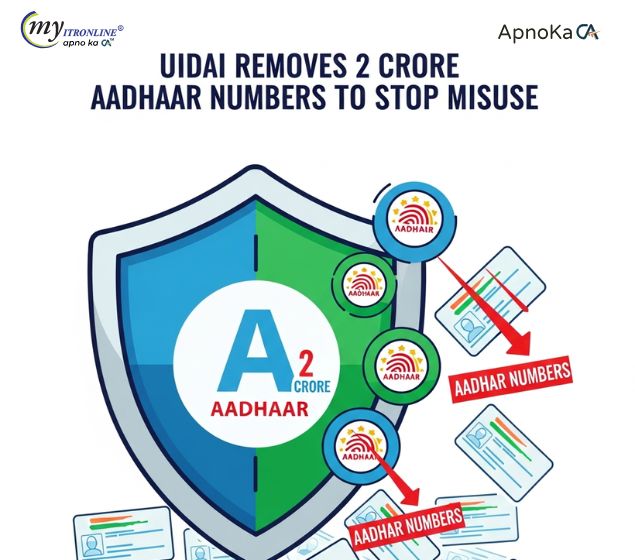The Right ITR Form for You: Navigating AY 2025-26 Changes (ITR-1 to ITR-7)
This blog post serves as a comprehensive guide to selecting the correct Income Tax Return (ITR) form (ITR-1 to ITR-7) for Assessment Year 2025-26 (Financial Year 2024-25). It begins by emphasizing the importance of choosing the right form to avoid penalties and highlights the extended filing deadline for individuals and HUFs. The post then details important updates for AY 2025-26, including changes to LTCG reporting in ITR-1/4, compulsory detailed disclosures for old regime deductions, new TDS section requirements, revised asset reporting thresholds, and the default new tax regime. A simplified overview of applicability and exclusions for each ITR form (ITR-1 to ITR-7) is provided. Finally, it uses seven practical case studies to illustrate how different taxpayer profiles (salaried, freelancers, businesses, firms, companies, trusts) can correctly identify their applicable ITR form. The synopsis concludes by advising readers to consult official guidelines and tax professionals for accurate filing.
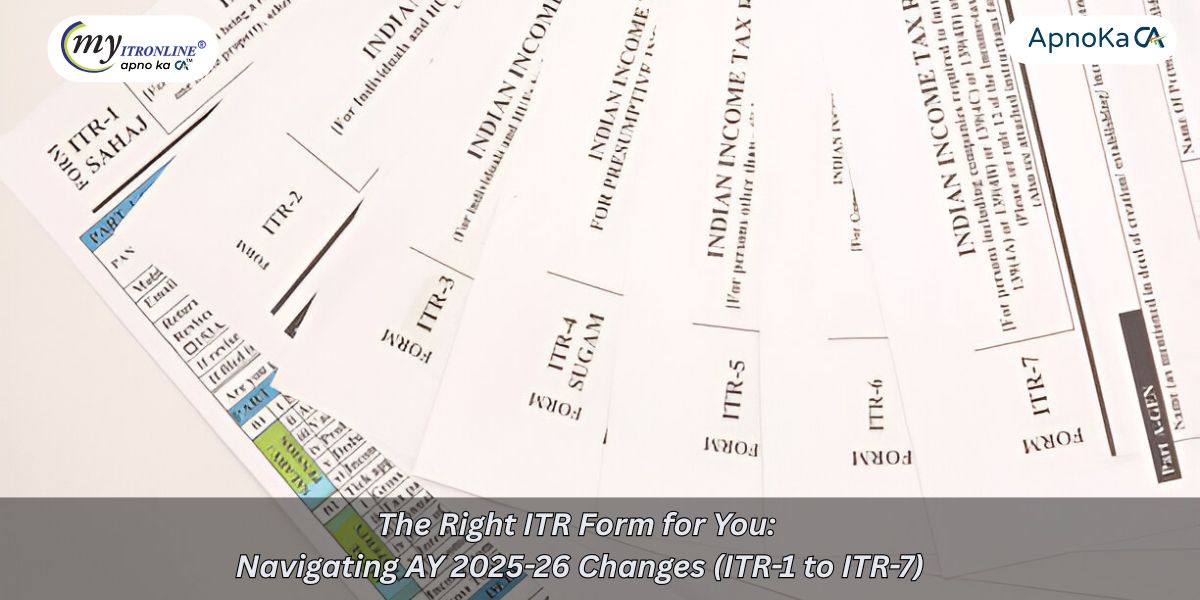
Understanding ITR Forms (ITR-1 to ITR-7) for AY 2025-26: Selecting the Appropriate Form for Your Earnings
The Income Tax Act of 1961 requires different ITR forms depending on the category of taxpayer and the sources of income. Choosing the correct form is the initial and most crucial step to filing your income tax return correctly. Using an incorrect form may result in your return being classified as defective, necessitating rectification, and potentially incurring penalties.
For the Assessment Year 2025-26, the deadline for individuals and HUFs (who are not subject to an audit) to file their ITRs has been extended to September 15, 2025, from the standard July 31, 2025. This extension allows taxpayers additional time to adjust to the new validation rules and disclosure requirements.
Important Updates Across ITR Forms for AY 2025-26:
- Reporting of Long-Term Capital Gains (LTCG) in ITR-1 and ITR-4: In the past, taxpayers with LTCG exceeding ₹1 lakh were required to submit ITR-2 or ITR-3. Now, LTCG up to ₹1.25 lakh under Section 112A (from publicly traded equity shares or mutual funds) can be reported directly in ITR-1 and ITR-4 if other eligibility criteria are fulfilled.
- Compulsory Detailed Disclosures for Deductions (Old Regime): Those opting for the old tax regime need to provide more detailed information when claiming deductions under sections such as 80C, 80D, 80E, and 80DDB (e.g., type of investment, amount, and payee specifics).
- Requirement to Specify TDS Sections: Taxpayers must indicate the specific section under which TDS was deducted for various income sources (e.g., 192 for salary, 194A for interest).
- Updated Asset Reporting Thresholds: The income level for mandatory disclosure of assets and liabilities in ITR-2 and ITR-3 has been raised to ₹1 crore (up from ₹50 lakh).
- Separation of Capital Gains Reporting: Notably, for ITR-2, ITR-3, and ITR-7, capital gains incurred before and after July 23, 2024, must now be reported separately due to changes in the LTCG tax treatment established in the Finance Act of 2024.
- Default Tax Regime: The new tax regime is now the default choice for individuals and HUFs. Taxpayers wishing to opt out must submit Form 10-IEA (relevant for business income cases) by the due date.
Simplified Overview of Applicability for Each ITR Form:
ITR-1 (SAHAJ) - Designed for Salaried Individuals and Pensioners
Eligible to file:
ITR-1 is the most straightforward form and is intended for Resident Individuals (not Resident Not Ordinarily Resident - RNOR) whose total income for the financial year does not exceed ₹50 lakh and who earns income from:
- Salary/Pension
- One House Property (excluding scenarios where losses are carried forward from preceding years)
- Other Sources (Interest earnings, Family Pension, Dividend income, etc. - but excluding Lottery winnings and Income from Race Horses)
- Agricultural income limited to ₹5,000
- Long-term capital gains (LTCG) under Section 112A up to ₹1.25 lakh (from listed equity shares or mutual funds, without any carried-forward or brought-forward capital loss).
Ineligible to file (Key Exclusions):
- Total income exceeding ₹50 lakh.
- Agricultural income surpassing ₹5,000.
- Possessing taxable capital gains (other than LTCG under section 112A up to ₹1.25 lakh).
- Income derived from Business or Profession.
- Income from more than one house property.
- Holding a Directorship in a company.
- Having investments in unlisted equity shares at any point during the financial year.
- Owning assets (including a financial interest in any entity) outside India, including having authority over accounts located outside India.
- Being a Resident Not Ordinarily Resident (RNOR) or a Non-Resident.
- Receiving any foreign income.
- If tax has been deducted under Section 194N (TDS on cash withdrawals exceeding specified limits).
- If the tax payment or deduction has been deferred for ESOPs.
- Having any losses carried forward or brought forward under any income category.
ITR-2 - For Individuals and HUFs without Business or Profession Income
Eligible to file:
ITR-2 is designed for Individuals and Hindu Undivided Families (HUFs) who don't qualify to use ITR-1 and do not earn income from "Profits and Gains of Business or Profession." This form is appropriate for taxpayers who have:
- Income from salary or pension.
- Income from multiple house properties.
- Income from capital gains (both short-term and long-term, including amounts surpassing ₹1.25 lakh as per Section 112A).
- Income from other sources (which includes winnings from lotteries and earnings from racehorses).
- Agricultural income exceeding ₹5,000.
- Foreign income or assets.
- If you hold a position as a director in a company.
- If you have made investments in unlisted equity shares at any point during the financial year.
- Identifying as a Resident Not Ordinarily Resident (RNOR) or a Non-Resident.
- If tax has been withheld under Section 194N.
- If there is a deferral in tax payment or deduction regarding ESOPs.
- Possessing any losses carried forward or losses that are to be carried forward within any income category.
- Combining income from another individual (spouse, child, etc.) if their income falls under the above classifications.
Who cannot file:
- Individuals or HUFs with income arising from "Profits and Gains of Business or Profession."
- Individuals who meet the criteria for filing ITR-1.
ITR-3 - Suitable for Individuals and HUFs with Business/Profession Income
Who can file:
ITR-3 is the most detailed form for Individuals and Hindu Undivided Families (HUFs) possessing income from "Profits and Gains of Business or Profession." This covers:
- Income generated from a proprietary business.
- Income derived from a profession (for instance, doctors, lawyers, chartered accountants, consultants).
- Income received as a partner in a partnership firm (including salary, interest, bonuses, commissions, and share of profits).
This form can also be utilized if the individual/HUF earns income from salary, house property, capital gains, and other sources, in addition to business/professional income.
- Individuals required to have their accounts audited as per Section 44AB.
Who cannot file:
- Entities other than individuals and HUFs (for example, firms, LLPs, companies).
- Individuals and HUFs without business or professional income who are eligible to file ITR-1, ITR-2, or ITR-4.
ITR-4 (SUGAM) - For Individuals, HUFs, and Firms opting for Simplified Taxation
Who can file:
ITR-4 (Sugam) is an easier form for Resident Individuals, Hindu Undivided Families (HUFs), and Firms (excluding LLP) whose total income is below ₹50 lakh and who choose the presumptive taxation scheme under:
- Section 44AD (for businesses with gross receipts up to ₹2 crore)
- Section 44ADA (for specified professions with gross receipts not exceeding ₹75 lakh)
- Section 44AE (for qualifying businesses involved in plying, hiring, or leasing goods carriages).
This form also accommodates income from salary/pension, one house property, other sources (except lotteries and racehorses), and agricultural income not exceeding ₹5,000.
- Long-term capital gains (LTCG) under Section 112A up to ₹1.25 lakh (from listed equity shares or mutual funds, with no carried-forward or brought-forward capital loss).
Who cannot file (Key Ineligibility Criteria):
- Total income exceeding ₹50 lakh.
- Holding taxable capital gains (beyond LTCG u/s 112A up to ₹1.25 lakh).
- Earning income from multiple house properties.
- Being a director in a company.
- Possessing investments in unlisted equity shares at any point in the previous year.
- Owning any assets (including financial interest in any entity) outside India, including having signing authority in any foreign accounts.
- Having any foreign income.
- If tax has been deducted under Section 194N.
- If the payment or tax deduction for ESOPs has been postponed.
- Possessing any carried forward loss or losses to be carried forward under any income head.
- Individuals classified as Resident Not Ordinarily Resident (RNOR) or Non-Resident.
ITR-5 - Applicable for Firms, LLPs, AOPs, BOIs, etc.
Eligible filers:
ITR-5 is intended for entities excluding individual, HUF, company, or those filing ITR-7. It is relevant for:
- Partnership Firms
- Limited Liability Partnerships (LLPs)
- Associations of Persons (AOP)
- Bodies of Individuals (BOI)
- Co-operative Societies
- Local Authorities
- Artificial Juridical Persons (AJP)
- Representative Assessees
- Trusts (excluding those eligible for ITR-7)
- Estates of Deceased Persons
- Estates of Insolvents
- Business Trusts
- Investment Funds
Ineligible filers:
- An individual, HUF, or Company.
- Any person who must file ITR-7.
ITR-6 - For Companies
Eligible filers:
ITR-6 is specifically intended for Companies registered under the Companies Act, 2013, or the earlier Companies Act, 1956. This encompasses both:
- Domestic Companies
- Foreign Companies generating income in India
Ineligible filers:
- Companies claiming an exemption under Section 11 (i.e., income from property held for charitable or religious purposes). Such companies must file ITR-7.
ITR-7 - For Trusts, Political Parties, Institutions, etc.
Eligible filers:
ITR-7 pertains to individuals and companies mandated to submit a return under specific sections of the Income Tax Act:
- Section 139(4A): Individuals receiving income from property held under trust or legal obligations exclusively for charitable or religious purposes.
- Section 139(4B): Political parties.
- Section 139(4C): Scientific research associations, news agencies, or institutions specified in Section 10(23A) and Section 10(23B).
- Section 139(4D): Universities, colleges, or other institutions that aren't obligated to report income/loss under any other provisions.
- Section 139(4E): Business Trusts.
- Section 139(4F): Investment Funds.
Ineligible filers:
- Any individual not falling into the categories mentioned above.
Case Studies for Various Taxpayer Profiles (AY 2025-26):
To demonstrate applicability, let’s review a few typical scenarios:
Case Study 1: Salaried Individual with Bank Interest
Profile: Ms. A is a 32-year-old resident individual employed at a private firm. Her annual salary totals ₹15 lakh. Additionally, she earns ₹30,000 in interest from her savings account and ₹10,000 from fixed deposits. She has no other income sources, no overseas assets, and is not a company director.
Which ITR Form? ITR-1 (SAHAJ).
- Her total income is under ₹50 lakh.
- Her income sources are restricted to salary and other sources (interest).
- She satisfies all other eligibility requirements for ITR-1.
Case Study 2: Salaried Individual with Capital Gains and Multiple Rental Properties
Profile: Mr. B is a 45-year-old resident individual, earning an annual salary of ₹35 lakh. He owns two properties, one of which is self-occupied while the other is rented out, producing rental income. Over the year, he sold some equity shares, resulting in a long-term capital gain of ₹5 lakh (taxable under Section 112A). He does not have any business or professional income.
Which ITR Form? ITR-2.
- He cannot file ITR-1 because he has income from more than one house property and long-term capital gains exceeding ₹1.25 lakh.
- Since he does not have business or professional income, ITR-3 and ITR-4 are not relevant.
Case Study 3: Freelancer Choosing Presumptive Taxation
Profile: Ms. C is a 28-year-old resident individual working as a freelance content writer. Her gross income for the financial year is ₹30 lakh. She opts for the presumptive taxation scheme under Section 44ADA. Additionally, she has ₹50,000 in interest income from a savings account. Her total income is below ₹50 lakh.
Which ITR Form? ITR-4 (SUGAM).
She is an individual taxpayer who earns business income. She elects to follow presumptive taxation under Section 44ADA and her gross receipts fall within the prescribed limits for this scheme. Her total income is below ₹50 lakh, qualifying her to use ITR-4.
Case Study 4: Sole Proprietor with Business Income and Capital Gains
Profile: Mr. D, a 50-year-old resident individual, operates a manufacturing business. His annual turnover is ₹1.5 crore, and he does not choose presumptive taxation (maintaining books of accounts instead). Additionally, he sold a parcel of land resulting in a long-term capital gain of ₹20 lakh.
Which ITR Form? ITR-3.
He earns income from business or a profession (manufacturing business) and does not select presumptive taxation. Despite having capital gains, ITR-3 is the suitable form since it encompasses all income categories for individuals and HUFs with business or professional income.
Case Study 5: Partnership Firm
Profile: M/s. E & Co. is a registered partnership firm engaged in the trading sector. Their yearly turnover is ₹3 crore, and the firm must have its accounts audited.
Which ITR Form? ITR-5.
ITR-5 is specifically tailored for partnership firms.
Case Study 6: Private Limited Company
Profile: ABC Solutions Pvt. Ltd. is a domestic private limited company that provides IT services. Their annual turnover reaches ₹10 crore.
Which ITR Form? ITR-6.
ITR-6 is the designated form for companies that do not seek exemption under Section 11.
Case Study 7: Charitable Trust
Profile: "Hope Foundation" is a registered charitable trust that earns income from properties utilized for charitable activities.
Which ITR Form? ITR-7.
As a charitable trust receiving income from properties held for charitable purposes, it must file under Section 139(4A).
Conclusion:
Selecting the correct ITR form for AY 2025-26 mainly hinges on the taxpayer's category (individual, HUF, firm, company, trust, etc.) and the types of income sourced. It is advisable to consult the most recent guidelines published by the Income Tax Department on their official website to ensure you are using the appropriate form and including all necessary disclosures. If you are uncertain, seeking advice from a tax professional can assist you in navigating the complexities and ensuring precise and timely filing of your income tax return. Keep in mind, adherence to tax compliance is not only a legal requirement but also supports the country's development.
Confused about which ITR form to file for AY 2025-26? MyITROnline simplifies it for you! Visit www.myitronline.com or call 9971055886 for expert tax filing assistance.
FILING YOUR INCOME TAX RETURN F.Y 2024-25 (A.Y. 2025-2026) WITH MYITRONLINE
The income tax filing deadline is right around the corner. If you haven’t filed yet, do it today with Myitronline! Avoid last minute rush and file your tax return today on MYITRONLINE in Just 5 mins.(www.myitronline.com)
If you are looking for eCA assistance to file your income tax return/ GST, you can opt for MYITRONLINE eCA assisted plan starting
Upload Salary Individual Form-16
If you have any questions with filing your tax return, please reply to this mail. info@myitronline.com OR call 9971055886,8130309886.
Note-All the aforementioned information in the article is taken from authentic resources and has been published after moderation. Any change in the information other than fact must be believed as a human error. For queries mail us at marketing@myitronline.com
Krishna Gopal Varshney
An editor at apnokacaKrishna Gopal Varshney, Founder & CEO of Myitronline Global Services Private Limited at Delhi. A dedicated and tireless Expert Service Provider for the clients seeking tax filing assistance and all other essential requirements associated with Business/Professional establishment. Connect to us and let us give the Best Support to make you a Success. Visit our website for latest Business News and IT Updates.
Leave a reply
Your email address will not be published. Required fields are marked *Share this article
Krishna Gopal Varshney, Founder & CEO of Myitronline Global Services Private Limited at Delhi. A dedicated and tireless Expert Service Provider for the clients seeking tax filing assistance and all other essential requirements associated with Business/Professional establishment. Connect to us and let us give the Best Support to make you a Success. Visit our website for latest Business News and IT Updates.
View articles








